Postmaster General Louis DeJoy has a message for America: The U.S. Postal Service is ready for a flood of election mail and is better positioned to do so than it was four years ago.
The Postal Service has been undergoing rapid changes, including the opening of large hubs, but some of those changes are being paused before the election to ensure they don’t interfere with performance, DeJoy said. And it will be all hands on deck to ensure the millions of mail-in ballots are delivered swiftly to their destinations.
FILE – Postmaster General and CEO Louis DeJoy speaks in the East Room of the White House in Washington, Wednesday, March 6, 2024.
“We’re going to be in great shape for the election. I’m pretty confident about everything that were doing,” DeJoy said. “The American people should be confident.”
It’s a far cry from four years ago, when DeJoy, just a few months into the job, was being criticized as a Donald Trump crony who was dismantling mail-processing machines and removing blue postal boxes to undermine the election as Trump, the president at the time, sowed distrust in the Postal Service. Despite being excoriated, DeJoy’s Postal Service performed admirably under a crush of mail-in votes during the pandemic.
People are also reading…
If there was any lesson learned from the painful experience, he said, it was that the Postal Service needed to be bolder in its messaging.
“We have to be louder than the noise in communicating how well we’re going to do and that things are going to be OK. Things are going to be good. We’re in a better operating position than we ever have been,” he said.
U.S. Postal Service officials briefed news reporters Thursday on measures that are being taken to ensure election mail reaches its destinations, building on its performance in 2020, when 97.9% of ballots were returned to election officials within three days, and in 2022, when 98.9% of election mail was delivered within three days. DeJoy said he’d like to inch closer to 100% this election cycle.
The lack of drama is a welcome relief from four years ago, when the Postal Service was dogged by backlogs and accusations of voter suppression ahead of the 2020 presidential election, in which more than 135 million ballots were delivered to and from voters.

The U.S. Postal Service’s next-generation delivery vehicle, left, is displayed as one of the current delivery trucks leaves the Kokomo Sorting and Delivery Center in Kokomo, Ind., Thursday, Aug. 29, 2024.
DeJoy was criticized for restricting overtime payments for postal workers and stopping the agency’s longtime practice of allowing late and extra truck deliveries in the summer of 2020. And the previously scheduled dismantling of dozens of mail-sorting machines and removal of blue boxes, corresponding with a massive drop in first-class mail, provided additional fuel to critics. The postmaster general, who was a major donor to Trump, was thought to be on thin ice, especially with the election of Democratic President Joe Biden.
“It was sensationalized. It scared the hell out of the American people,” DeJoy said.
Reflecting on the period, he said the accusations were “just crazy” and especially frustrating as he worked seven days a week after taking over an organization that was going to run out of cash in 60 days.
“We got through that. The organization performed extremely well. After that, I began working with both sides of the aisle. My main mission now is to make this place better. And we have made this place better,” he said.
U.S. Rep. Gerry Connolly, a frequent critic of changes under DeJoy, said Thursday that he’s confident Postal Service workers will “will ensure every ballot cast by mail is safely and securely delivered.” But the Virginia Democrat also said that oversight is important and that “Congress must remain vigilant on decisions made by the postmaster general in the days leading up to this election.”
The Postal Service is proceeding with a 10-year, $40 billion Postal Service modernization plan in which it’s renovating aging facilities, opening modern regional hubs in Georgia, Virginia, Oregon and elsewhere, and starting the process of purchasing 100,000 vehicles to replace older delivery trucks dating to 1987. The next-generation delivery vehicle was displayed Thursday at a separate event in Indiana that was aimed at promoting the Postal Service’s investments.
The Postal Service also showed that it can make adjustments when it abandoned a criticized plan to reroute Reno, Nevada-area mail processing to Sacramento, California, that had created an uproar among northern Nevada residents.
If there’s anything the public can do to help, DeJoy said, it would be to avoid procrastination when it comes to mailing ballots. “Vote early! If you’re using the mail, help us out,” he said.
A brief history of American mail service
A brief history of American mail service
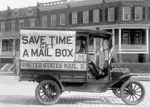
It’s no secret that the United States Postal Service has been more present in the minds of Americans during the last few years. Due to the COVID-19 pandemic, there has been a movement both to connect with others via a more meaningful medium than electronic communication, as well as to protect the lives and safety of frontline postal workers.
The USPS has a storied history beginning in Colonial America, when revolutionaries needed a way to communicate with each other without going through the British Royal Mail. The Royal Mail reserved the right to open and read any document or package it carried, squelching any illicit activities or plans early Americans may have had. As a result, the Constitutional Post was created in secret and was key to the Colonies’ victory over the British Empire in 1783.
Today, controversy surrounds the USPS, as it was politicized heavily during the 2020 presidential election regarding the service’s role in facilitating mail-in voting. Additionally, Postmaster General Louis DeJoy recently announced plans for the new postal vehicle fleet to be gas-powered instead of electric, causing a bout of criticism about the sustainability efforts of the USPS.
In honor of the long postal tradition in America, Stacker investigated the history of the U.S. Postal Service from Colonial times to present day using a variety of historical, news, and government sources.

1639: Richard Fairbanks’ tavern is designated as the official repository for mail in the American colonies.
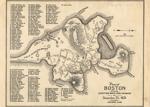
Richard Fairbanks’ tavern in Boston is widely considered the first post office in America, chosen in line with the English tradition of having mail drop-off locations at cafes and taverns. Fairbanks was also a well-known citizen and close friend of the Rev. John Cotton, who established the first church in Boston. At the time the tavern began collecting mail in 1639, letters were primarily used for communication between the Colonies and England and cost a penny each to send.
1710: The Queen Anne Act is passed

The Queen Anne Act, officially referred to as the British Post Office Act, was passed in 1710, but did not have an impact on the American postal system until 1711, when it instituted the Colonies’ first deputy postmaster general. The act also established uniform postage rates for various types of mail sent between America and Europe, one of many means by which the British government taxed the colonists.
1775: William Goddard’s postal tenets are adopted by the Second Continental Congress
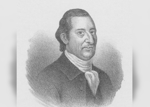
William Goddard was a printmaker in Rhode Island and was one of the most influential individuals in ideating the Constitutional Post in America. Goddard wrote to the Second Continental Congress, petitioning them to create a mail system free from the prying eyes of the government—the opposite of the British Royal Post. Though Goddard was proud to have his ideas adopted, the Congress bypassed him for the role of postmaster general, awarding it instead to Benjamin Franklin and making Goddard the surveyor of the post.
1802: A federal law is passed banning Black people from carrying mail for the Post Office Department
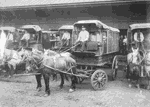
What is known today as the Haitian Revolution was a series of ultimately successful uprisings of enslaved Haitians against British and French colonizers from 1791-1804. The success of these uprisings stoked fear in the hearts of pro-slavery Americans who worried that enslaved people in the U.S. would also create a resistance movement. Though Black people had carried local and personal mail in the Colonies for decades, Postmaster General Gideon Granger was so concerned about a possible “general and united operation” that he convinced Congress to ban Black people from carrying the mail entirely.
1835: The American Anti-Slavery Society uses a technicality to send pro-abolition materials as newspapers via the Post Office Department
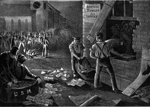
In 1835, slavery was alive and well in the U.S., but an abolitionist movement was growing, especially in the North. In order to distribute pro-abolition materials to the South, the American Anti-Slavery Society decided to distribute a newspaper instead of letters, as the Post Office allowed newspapers to be mailed at lower rates to maintain the freedom of the press. Unsolicited newspapers began showing up at the doors of Southern homes, causing a 3,000-person riot in Charleston, South Carolina, and ultimately pushing the postmaster general to declare that local postmasters could decide whether or not to censor certain newspaper material in order to avoid future violence.
1860-1861: The Pony Express is in operation

Though the Pony Express occupies an almost mythical position in American consciousness, the operation only lasted about 18 months and was a private endeavor. William Russell, William Waddell, and Alexander Majors began the Pony Express under the name of the Central Overland California & Pikes Peak Express Company in 1860 in order to demonstrate that mail could be delivered from St. Joseph, Missouri, to Sacramento, California, via a central overland route in less than 10 days. The enterprise was initially successful, but due to a number of carrier deaths from the dangerous terrain and the introduction of the telegraph, its assets were sold to Wells Fargo and the Overland Mail Company in 1861 and discontinued altogether shortly thereafter.
1863: The first Black employee of the Post Office Department is hired
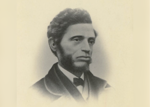
William Cooper Nell was a civil rights activist and historian who began his association with the mail when he was an apprentice at The Liberator, a pro-abolition newspaper in Boston. From there, Nell proceeded to work with Frederick Douglass on The North Star and advocated for the equal education of Black Americans throughout his life. He was not only the first Black employee of the Post Office Department, but also the first known Black employee of any U.S. federal government entity.
1873: Censorship legislation commonly known as the Comstock Act is passed
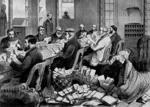
The Act for the Suppression of Trade In, and Circulation of, Obscene Literature and Articles of Immoral Use, also known as the Comstock Act, made it explicitly illegal to send any material through the mail that was deemed “obscene, lewd, or lascivious,” “immoral,” or “indecent.” Anthony Comstock, the legislation’s namesake, was the founder and head of the New York Society for the Suppression of Vice and named a special agent of the Post Office Department in order to enforce this law. Items that were seized under this legislation included documents about contraception and abortion, information from physicians about sexually transmitted infections, and anatomical illustrations, among others.
You may also like: U.S. Marine Corps history from the year you were born
1960s: Mail backups are rampant across the U.S., causing the implementation of zip codes

By 1960, the Post Office was processing 63.7 billion pieces of mail annually, more than double what it had been in 1940. This huge influx of mail caused massive backups, especially in cities like Chicago, because it was being sorted by hand; however, the efficient mechanization of mail sorting needed addresses to be more specific and standardized. The ZIP code was created in 1963 to do just that, though it faced significant pushback from American citizens who were afraid their small town names would be reduced to just a number.
1970: Post Office Department employees go on strike, resulting in the first postal unions and the reform of the Post Office Department into the U.S. Postal Service
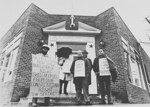
The 1970 postal strike was led by the newly established National Association of Letter Carriers and included nearly 200,000 postal workers. The mail slowed so much during the strike that the National Guard was brought in to sort and carry the mail. Ultimately, the NALC was able to negotiate a union contract, and Congress passed the Postal Reorganization Act, creating the United States Postal Service as a quasi-governmental organization that finances itself independently.
2006: The Postal Accountability and Enhancement Act is passed
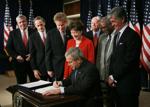
The Postal Accountability and Enhancement Act overhauled many aspects of how the USPS operates financially. It requires the USPS to pay retirement benefits for employees 75 years in advance and maintains postal employees on an independent medical coverage system that is not integrated with Medicare like other government entities. The PAEA also has provisions that limit the Postal Service’s ability to raise prices on postal goods and expand into new revenue streams without congressional approval.
2020: The U.S. Postal Service experiences extreme mail slowdowns due to the COVID-19 pandemic

Due to the COVID-19 pandemic, Americans relied more and more on the work of the USPS, ordering more packages online, getting groceries delivered, and even receiving medications via mail. This influx in volume, along with infrastructure issues and staffing difficulties, spiraled into ongoing mail delays. These issues impacted the process of the 2020 Presidential election, as many voters—an estimated 46% of all votes cast—chose to vote by mail in order to avoid going to polling places in person and risking COVID-19 exposure or infection.
Copyright 2024 The Associated Press. All rights reserved. This material may not be published, broadcast, rewritten or redistributed without permission.
Source link



